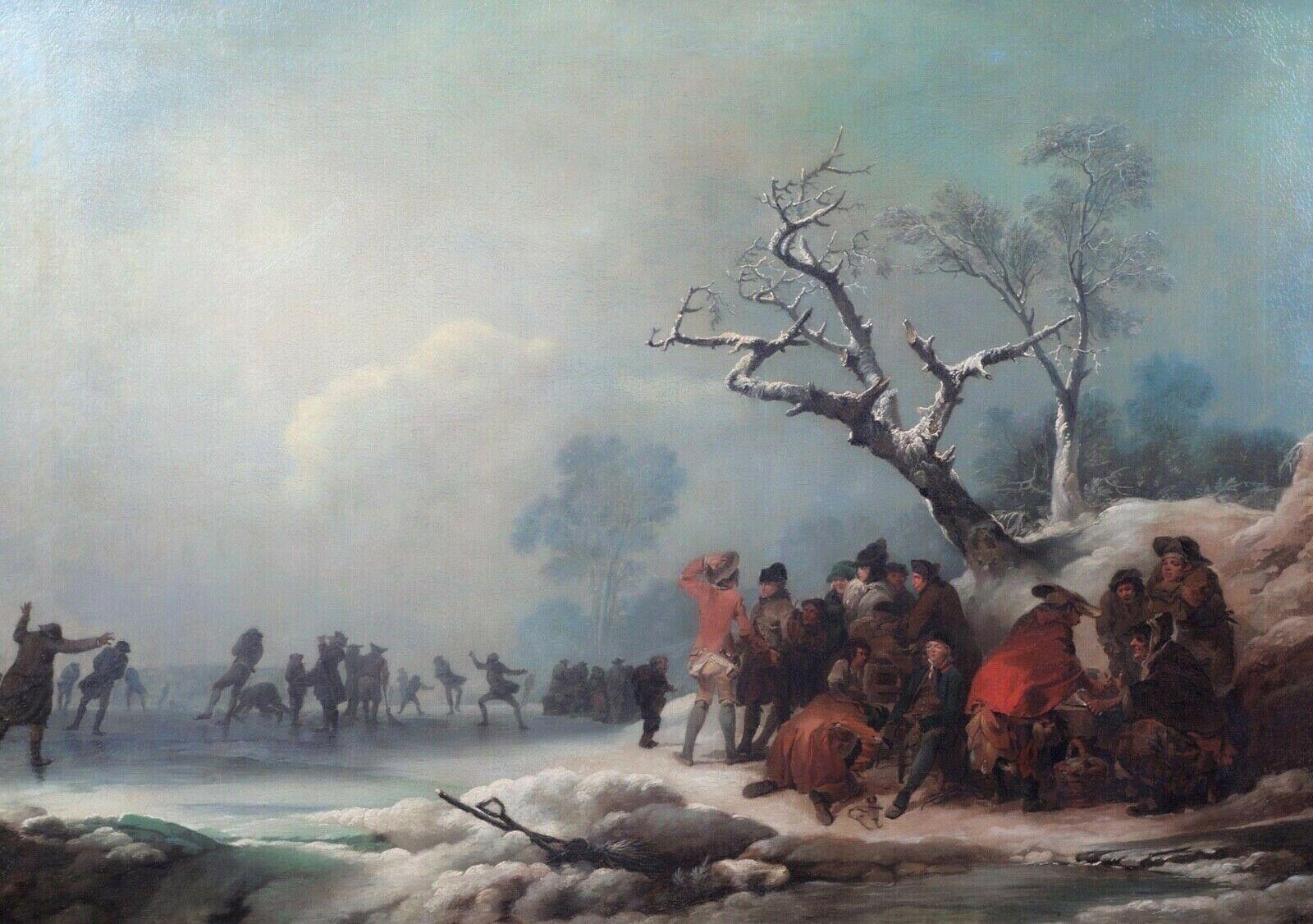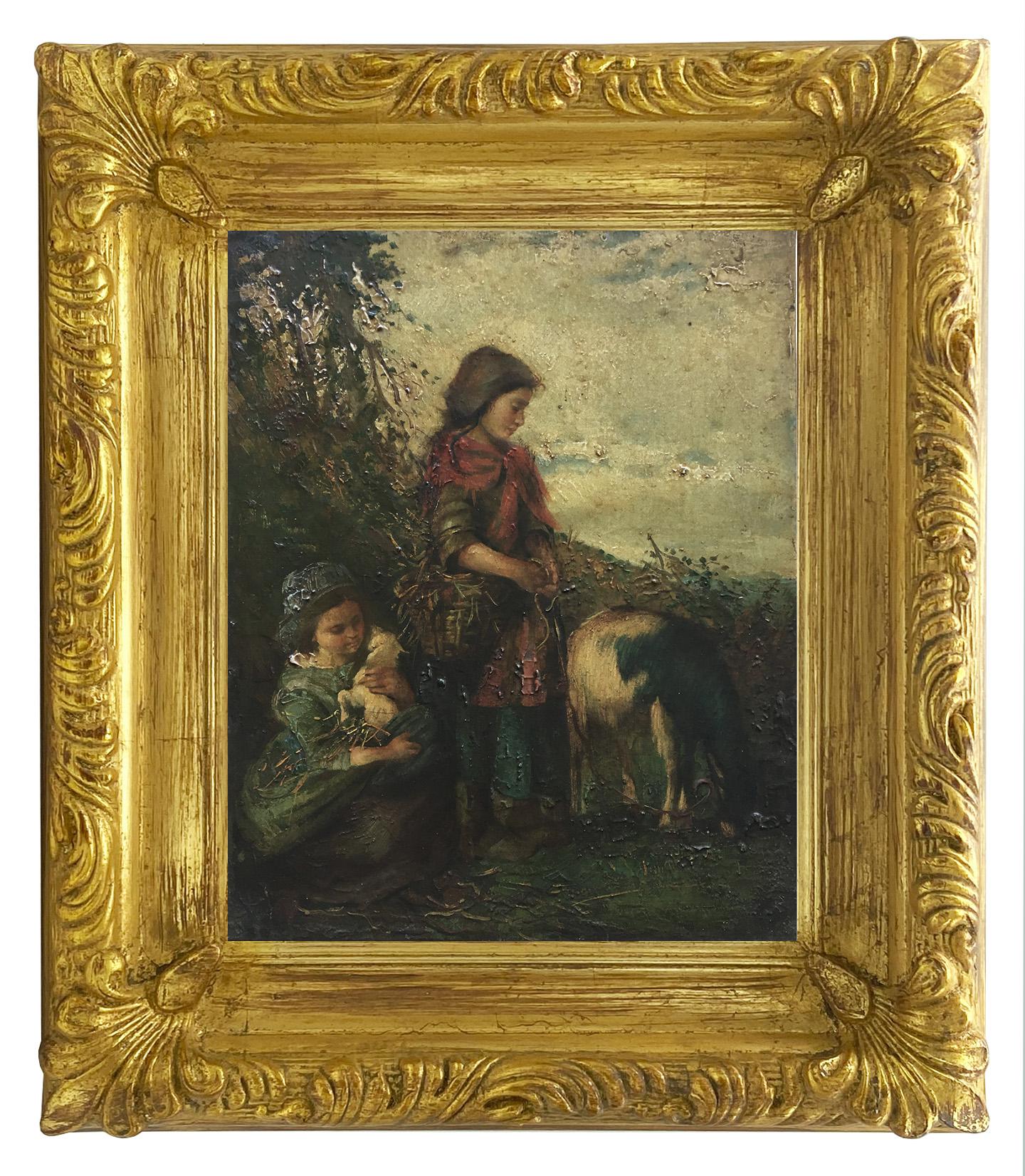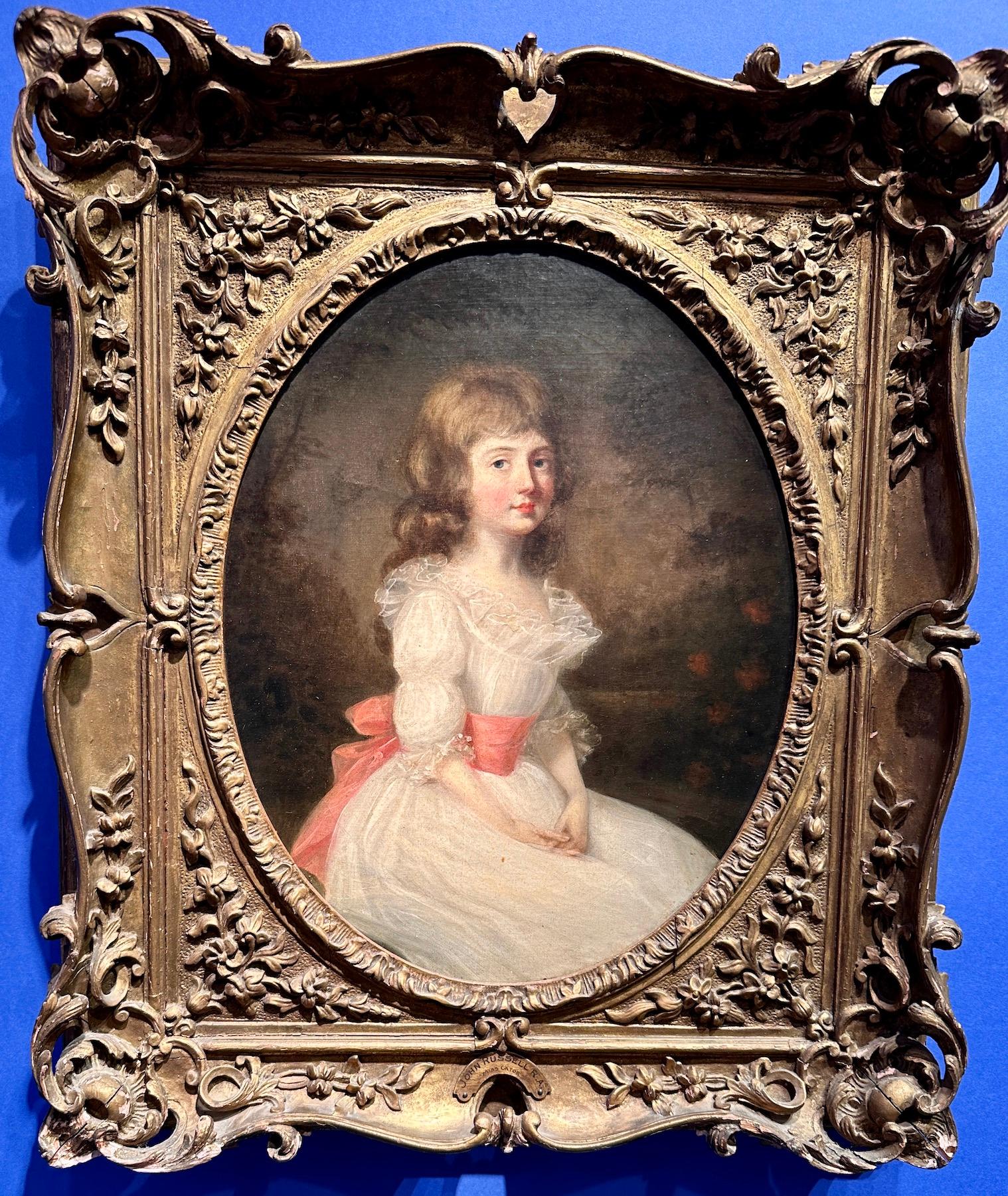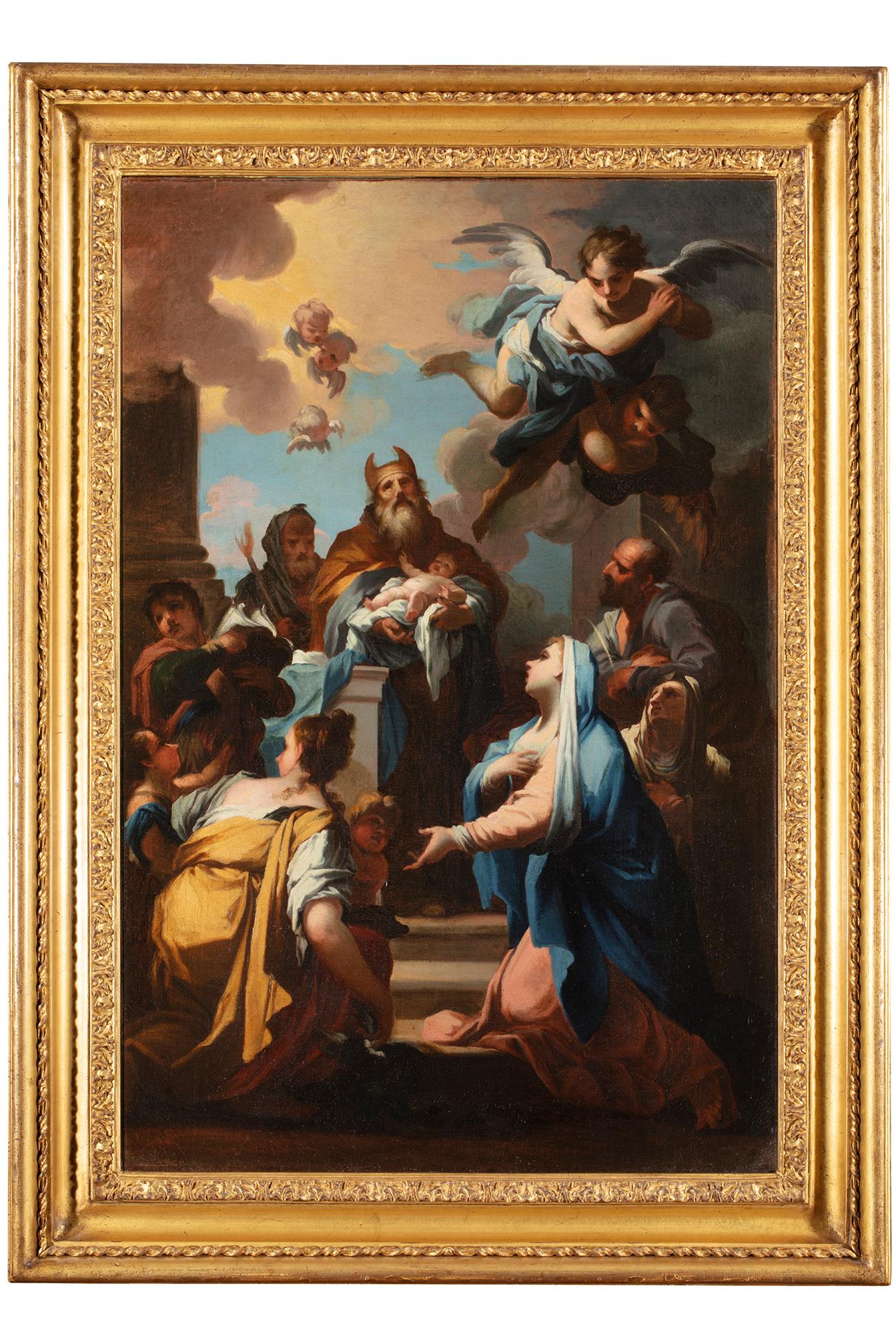Items Similar to Julius Caesar on Horseback
Want more images or videos?
Request additional images or videos from the seller
1 of 3
Julius Caesar on Horseback1594
1594
About the Item
Provenance: Private Collection, South America
Antonio Tempesta began his career in Florence, working on the decoration of the Palazzo Vecchio under the direction of Giorgio Vasari. He was a pupil first of Santi di Tito, then of Jan van der Straet, called Stradanus—two of the most prominent late Mannerist painters active in Florence. In the 1570s and 1580s Tempesta worked for a series of important Roman patrons, mostly painting large fresco decorations. These include work in the Vatican Palace and in the Church of San Stefano Rotondo, both for Pope Gregory XIII; the Roman palaces of the Giustiniani and Rospigliosi; at the Villa Lante in Bagnaia, the Palazzo Farnese in Caprarola, and the Villa d’Este in Tivoli. However, Tempesta’s fame rests less on his large fresco decorations than on his work as both a printmaker and as a painter of battle scenes. Between 1589 and 1627 Tempesta produced over one thousand prints, including single sheets and series, etchings and engravings of hunting scenes, topographical views, as well as historical and mythological subjects.
The present work relates to an etching of 1594 by Tempesta depicting Julius Caesar on horseback (Fig. 1), part of his series “The First Twelve Roman Caesars.” So much of the artist’s output was as a printmaker of etchings and engravings, but while his prints were distributed throughout Europe, Tempesta’s paintings remained largely in the collections of his Roman patrons. The relationship of our painting to the print is unclear. Was it Tempesta’s own model, which he later translated into a print? Or was the monumental painting based on the print? The presence of the battle scene in the painting --a vignette typical of Tempesta’s compositions (and not included in the etching)-- suggests that our painting was likely primary. The canvas is monumental in scale and is adorned with an original 17th-century frame, of typical Bolognese style. Julius Caesar is seen on a rearing horse seen from behind. He is dressed in armor and wields a military baton as he overlooks a battle unfolding in the background. No doubt painted for a large palace or villa, this painting evokes Julius Caesar’s position as a heroic figure in the Renaissance –as general, as author, and as emperor.
- Attributed to:Antonio Tempesta (1555 - 1630, Italian)
- Creation Year:1594
- Dimensions:Height: 79.5 in (201.93 cm)Width: 62 in (157.48 cm)
- Medium:
- Movement & Style:
- Period:
- Condition:
- Gallery Location:New York, NY
- Reference Number:1stDibs: LU10213350192

About the Seller
5.0
Recognized Seller
These prestigious sellers are industry leaders and represent the highest echelon for item quality and design.
Established in 1997
1stDibs seller since 2012
17 sales on 1stDibs
- ShippingRetrieving quote...Ships From: New York, NY
- Return PolicyThis item cannot be returned.
More From This SellerView All
- Job Cursed by His WifeBy Giovanni Battista LangettiLocated in New York, NYProvenance: Alfred (1883-1961) and Hermine Stiassni (1889-1962), Brno, Czech Republic, by 1925; thence London, 1938-1940; thence Los Angeles, 1940-1962; thence by descent to: Susanne Stiassni Martin and Leonard Martin, San Francisco, until 2005; thence by descent to: Private Collection, California Exhibited: Künstlerhaus, Brünn (Brno), 1925, as by Ribera. “Art of Collecting,” Flint Institute of Art, Flint, Michigan, 23 November 2018 – 6 January 2019. Literature: Alte Meister...Category
1670s Old Masters Paintings
MaterialsCanvas, Oil
- Head of an AngelLocated in New York, NYProcaccini was born in Bologna, but his family moved to Milan when the artist was eleven years old. His artistic education was evidently familial— from his father Ercole and his elder brothers Camillo and Carlo Antonio, all painters—but his career began as a sculptor, and at an early age: his first known commission, a sculpted saint for the Duomo of Milan, came when he was only seventeen years old. Procaccini’s earliest documented painting, the Pietà for the Church of Santa Maria presso San Celso in Milan, was completed by 1604. By this time the artist had made the trip to Parma recorded by his biographers, where he studied Correggio, Mazzola Bedoli, and especially Parmigianino; reflections of their work are apparent throughout Procaccini's career. As Dr. Hugh Brigstocke has recently indicated, the present oil sketch is preparatory for the figure of the angel seen between the heads of the Virgin and St. Charles Borrommeo in Procaccini's altarpiece in the Church of Santa Afra in Brescia (ill. in Il Seicento Lombardo; Catalogo dei dipinti e delle sculture, exh. cat. Milan 1973, no. 98, pl. 113). As such it is the only known oil sketch of Procaccini's that can be directly connected with an extant altarpiece. The finished canvas, The Virgin and Child with Saints Charles Borrommeo and Latino with Angels, remains in the church for which it was painted; it is one of the most significant works of Procaccini's maturity and is generally dated after the artist's trip to Genoa in 1618. The Head of an Angel is an immediate study, no doubt taken from life, but one stylistically suffused with strong echoes of Correggio and Leonardo. Luigi Lanzi, writing of the completed altarpiece in 1796, specifically commented on Procaccini's indebtedness to Correggio (as well as the expressions of the angels) here: “Di Giulio Cesare...Category
17th Century Old Masters Figurative Paintings
MaterialsPaper, Canvas, Oil
- An Architectural Capriccio with the Preaching of an ApostleBy Giovanni Paolo PaniniLocated in New York, NYProvenance: Santambrogio Antichità, Milan; sold, 2007 to: Filippo Pernisa, Milan; by whom sold, 2010, to: Private Collection, Melide, Switzerland De Primi Fine Art, Lugano, Switzerland; from whom acquired, 2011 by: Private Collection, Connecticut (2011-present) Literature: Ferdinando Arisi, “Ancora sui dipinti giovanili del Panini,” Strenna Piacentina (Piacenza, 2009): pp. 48, 57, 65, fig. 31, as by Panini Ferdinando Arisi, “Panini o Ghisolfi o Carlieri? A proposito dei dipinti giovanili,” Strenna Piacentina, (Piacenza, 2010), pp. 100, 105, 116, fig. 101, as an early work by Panini, a variant of Panini’s painting in the Museo Cristiano, Esztergom, Hungary. This architectural capriccio is one of the earliest paintings by Giovanni Paolo Panini, the preeminent painter of vedute and capricci in 18th-century Rome. The attribution to Panini has been endorsed by Ferdinando Arisi, and a recent cleaning of the painting revealed the artist’s signature in the lower right. Like many of his fellow painters working in Rome during his day, Panini was not a native of the Eternal City. He first trained as a painter and stage designer in his hometown of Piacenza and moved to Rome at the age of 20 in November 1711 to study figure painting. Panini joined the workshop of Benedetto Luti (1666-1724) and from 1712 was living on the Piazza Farnese. Panini, like many before and after him, was spellbound by Rome and its classical past. He remained in the city for the rest of his career, specializing in depicting Rome’s most important monuments, as well as creating picturesque scenes like this one that evoked the city’s ancient splendor. The 18th century art historian Lione Pascoli, who likely knew Panini personally, records in his 1730 biography of the artist that when Panini came to Rome, he was already “an excellent master and a distinguished painter of perspective, landscape, and architecture.” Panini’s earliest works from this period still show the evidence of his artistic formation in Piacenza, especially the influence of the view painter Giovanni Ghisolfi (1623-1683). However, they were also clearly shaped by his contact in Rome with the architectural capricci of Alberto Carlieri...Category
18th Century Old Masters Figurative Paintings
MaterialsOil, Canvas
- Holy Family with the Infant St. John the BaptistLocated in New York, NYLubin Baugin (Pithiviers 1610 – 1663 Paris) Holy Family with the Infant Saint John the Baptist Oil on canvas 22 x 42 ¼ inches (55.9 x 107.3 cm) Provenance: Marcello and Carlo ...Category
17th Century Old Masters Figurative Paintings
MaterialsOil, Canvas
- Portrait of a ManLocated in New York, NYProvenance: with Leo Blumenreich and Julius Böhler, Munich, 1924 Dr. Frederic Goldstein Oppenheimer (1881-1963), San Antonio, Texas; by whom given to: Abraham M. Adler, New York, until 1985; thence by descent to the present owners While old inscriptions on the verso of this panel propose its author to be Hans Holbein and the sitter Sir John More—a lawyer, judge, and the father of Sir Thomas More—this fine portrait has long been recognized to be by a Flemish hand. Max Friedländer gave the painting to Bernard van Orley (1487/1491 – 1541) in 1924, but did not include it in the volume dedicated to the artist in his Early Netherlandish Paintings...Category
16th Century Old Masters Portrait Paintings
MaterialsOil, Panel
- Madonna and Child with the Infant Saint John the BaptistLocated in New York, NYInscribed, reverse: Fr Brina Provenance: Private Collection, New Jersey. Francesco Brina was one of the “Studiolo” painters, responsible for the panel of Neptune and Amphitrite in F...Category
16th Century Old Masters Paintings
MaterialsOil, Wood Panel
You May Also Like
- Figure Ice Skating In Hyde Park, 18th Century Philip Jakob II DE LOUTHERBOURGLocated in Blackwater, GBFigure Ice Skating In Hyde Park, 18th Century Philip Jakob II DE LOUTHERBOURG (1740-1812) Fine huge 18th century Old Master morning frozen winter landscape of figures skating at Hyde Park, oil on canvas. Stunning large scale superb quality and condition winter scene with figures skating on the frozen water. Though unsigned the style and detail is unmistakably De Loutherbourg with a very similar composition currently held in the UK Government Art Collection (Whitehall & Downing Street...Category
18th Century Old Masters Figurative Paintings
MaterialsCanvas, Oil
- Joseph Pardons his BrothersBy Giulio CarpioniLocated in London, GBGiulio Carpioni was most likely born in Venice in 1613 and trained under the artist Alessandro Varotari known as Il Padovanino. After travelling to Rome early in his career he sett...Category
17th Century Old Masters Figurative Paintings
MaterialsCanvas, Oil
- Virgen del CarmenLocated in Miami, FLColonial School, Mexico, XVIII Century "Virgen del Carmen" Oil on canvas 70 x 40 inCategory
18th Century Old Masters Figurative Paintings
MaterialsCanvas, Oil
- COUNTRY SCENE- Neapolitan School Italian Figurative Oil on Canvas PaintingBy Jean Philipe MorenoLocated in Napoli, ITCOUNTRY SCENE - Oil on canvas cm.30x24 by Jean Philipe Moreno, Italy 2002. Frame available on request from our workshop. The painting by Jean Philipe Moreno depicts a bucolic scene. Moreno is inspired by the paintings of the Neapolitan School of the 1800s and in particular by the Neapolitan painter Filippo Palizzi...Category
2010s Old Masters Figurative Paintings
MaterialsCanvas, Oil
- 18th century Portrait of a young girl, Miss Cator in a landscape, white dressBy John RussellLocated in Woodbury, CTPortrait of a young British Girl, in her white dress with Pink Sash. Choosing to acquire an 18th-century portrait of a young girl by English artist John Russell is an opportunity to...Category
1780s Old Masters Portrait Paintings
MaterialsCanvas, Oil
- 18th Century by Matteo Bonechi Presentation of Jesus Painting Oil on CanvasLocated in Milano, LombardiaMatteo Bonechi (Florence 1669 - Florence 1756) Presentation of Jesus Oil on canvas, cm. 75 x 49 – with frame cm. 89,5 x 65 Shaped, carved and gilded wooden box frame Expertise: Sandro Bellesi Publications: Bozzetti, modelletti, sketches: dalla collezione di Giorgio Baratti (From the Giorgio Baratti Collection) curated by Anna Orlando, Agnese Marengo and Annalisa Scarpa, Genova, 2022, pp. 20, 21. The present painting is a very interesting testimony of the creative process of Matteo Bonechi, one of the leading artists on the Tuscan art scene in the early 18th century. The canvas in question is in fact the last preparatory model made by Bonechi before he executed an altarpiece for the church of San Filippo Neri in Cortona in 1716. The scene presented here is that of the Presentation of Jesus, when, forty days after his birth, the child is ransomed through an offering in the temple and placed in the hands of Simeon, who prophesies his future: the coming of the Messiah...Category
Early 18th Century Old Masters Figurative Paintings
MaterialsCanvas, Oil
Recently Viewed
View AllMore Ways To Browse
Caesars Palace
Hunting Etchings
Tivoli Print
Monumental Old Masters Oil Paintings
Horse Paintings 17th
Horse Armor
Horse Armour
Roman Emperors Paintings
Painting Of Roman Emperors
Roman Emperors Framed
Caesar Prints
Antique Roman Armor
Prints Pope Vatican
Antique Horse Armor
Master Horse 17th Century
Giorgio Villa
Roman Julius Caesar
Lante Print




